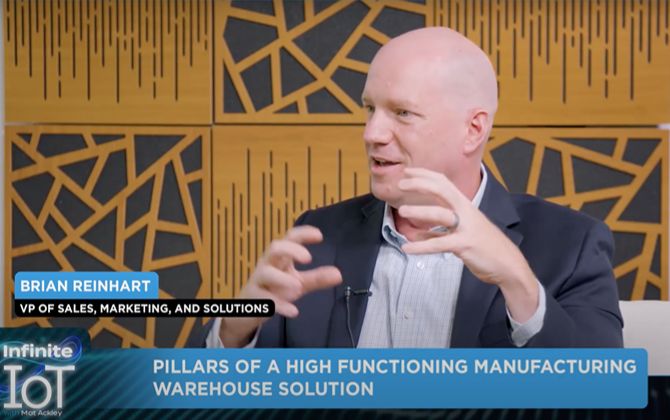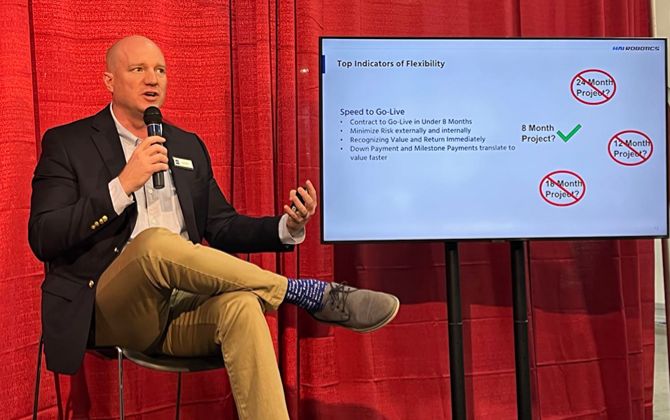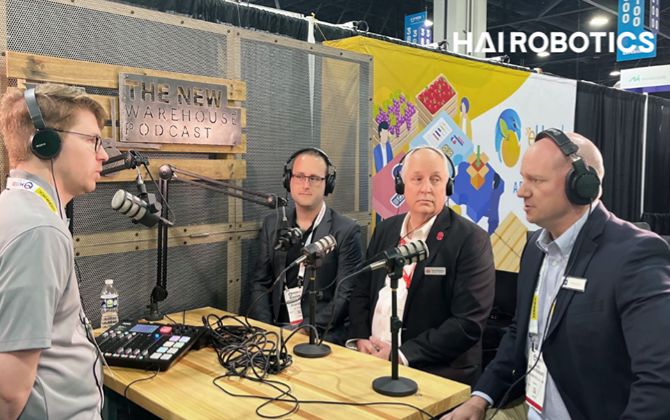The Three Pillars of High-Functioning Manufacturing Warehouse Solution
Brian Reinhart, Vice President of Sales, Marketing, and Solutions at HAI ROBOTICS US spoke with Mathew Ackley from Infinite IoT and shared three fundamental pillars that any high-functioning manufacturing warehouse should integrate to execute these solutions.
"People want goods faster, cheaper, easier, which has created undue stress in the supply chain and the warehousing industry."
But wanting it and making it happen are two different things. Manufacturing is always up for the task; thankfully, with today’s automated technology solutions, new ways of achieving those goals are at hand. Brian Reinhart, Vice President of Sales, Marketing, and Solutions at HAI ROBOTICS US spoke with Mathew Ackley from Infinite IoT and shared three fundamental pillars that any high-functioning manufacturing warehouse should integrate to execute these solutions.

Pillar 1: Speed
"What I mean by speed is how quickly we can get products from point A to point B to point C within the warehouse. And if we just take your typical warehousing environment, you're getting bulk inventory in, either from a manufacturer, production facility, a vendor, and then you store it, on a rack, in a tote, or something like that, and then you're getting out the door to fulfill an order, that someone maybe paid for it on Amazon or Walmart. And from those simple operations, what we need to figure out how we can do is get from A to B to C quicker."
Pillar 2: Density
"Ok, we solved speed, but this automation is taking us a lot of space. We still need large footprint real estate, we still need big million square-foot box warehouse. How do we get more compact, more condensed to save that space. So, you saw an evolution of the technology. We couldn't sacrifice speed, but we just had to evolve it into a more dense platform. So, that came with utilizing vertical space. You know a lot of traditional technologies, especially the manual ones, are limited by human being heights. By automating to the top of the ceiling, we no longer have a bunch of waste vertical space. By storing in a compact dense fashion and using robots, we were able to eliminate drive aisles, which again, when you're looking at a four-truck putting pallets to and from an aisle that's 50% air that we are storing in those drive aisles."
Pillar 3: Flexibility
"Flexibility is a bit more subjective, a bit more conceptual. It comes in a number of different shapes and forms. The few that we can talk about is, how quick and easy it is to integrate this equipment? What if something changes and we have to pivot? Or we have to scale up or scale down? What if we need to expand our business in the future? If seasonality causes massive spikes in our order volume or our profiles change, how would the automation adapt? And so, what we're now doing is taking that speed, taking that density and adding that third part of that venn diagram flexibility, to ensure that not only we are getting orders out the door as quick as possible, with the minimum footprint, but we're designing all of these different contingencies and unknowns into the technology so that it can real-time adapt on the fly to handle them.
Watch the full interview:
Our products & solutions: HAIPICK Solution - Autonomous Case-handling Robot Systems
Contact us: info@hairobotics.com

